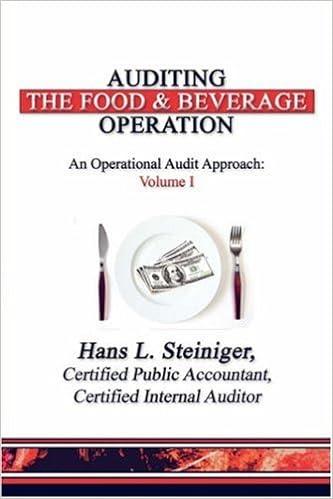Question
CKC manufactures two different types of toys (A and B, sold in 1,000-count boxes) that are manufactured and assembled on three different workstations (W, X,
CKC manufactures two different types of toys (A and B, sold in 1,000-count boxes) that are manufactured and assembled on three different workstations (W, X, and Y) using a small-batch process (see Figure). Batch setup times are negligible. The flowchart denotes the path each product follows through the manufacturing process, and each products price, demand per week, and processing times per unit are indicated as well. Purchased parts and raw materials consumed during production are represented by inverted triangles. CKC can make and sell up to the limit of its demand per week; no penalties are incurred for not being able to meet all the demand. Each workstation is staffed by a worker who is dedicated to work on that workstation alone and is paid $6 per hour. Total labor costs per week are fixed. Variable overhead costs are $3,500/week. The plant operates one 8-hour shifts per day, 5 days per week.
The senior management at CKC is concerned with the existing capacity limitation, so they want to accept the mix of orders that maximizes the companys profits. Traditionally, CKC has utilized a method whereby decisions are made to produce as much of the product with the highest contribution margin as possible (up to the limit of its demand), followed by the next highest contribution margin product, and so on until no more capacity is available. Because capacity is limited, choosing the proper product mix is crucial. The newly hired production supervisor is an avid follower of the TOC philosophy and the bottleneck method for scheduling. He believes that profitability can indeed be approved if bottleneck resources are exploited to determine the product mix.

a) Which of the three workstations, W, X, or Y, has the highest aggregate workload, and thus serves as the bottleneck for CKC?
| Workstation | Load from Product A (min) | Load from Product B (min) | Total Load (min) |
| W | .......... | .......... | ........... |
| X | ......... | ....... | ......... |
| Y | ........ | ......... | .......... |
The workstation ........ is the bottleneck.
b) What is the profit if the traditional contribution margin method is used for determining CKCs product mix?
| Product A | Product B | |
| Price | ...... | ...... |
| Raw and Purchased Parts | ...... | ...... |
| Contribution Margin | ...... | ...... |
Product ....... has a higher contribution margin/unit
| Workstation | Minutes at Start | Minutes Left after Making ..... ......(A or B) | Minutes Left after Making ....... .....(B or A) |
| W | ....... | ....... | ....... |
| X | ....... | ....... | ....... |
| Y | ....... | ....... | ....... |
The best product mix according to this traditional approach is then .......... units of ....... (A or B) and ........ units of ...... (B or A) .
| Revenues ($) | ....... |
| Raw materials ($) | ....... |
| Purchased part ($) | ....... |
| Labor ($) | ....... |
| Overhead | ....... |
| Profit ($) | ....... |
c) What is the profit if the bottleneck method is used for selecting the product mix?
| Product A | Product B | |
| Contribution margin ($) | ....... | ....... |
| Time at bottleneck (min) | ....... | ....... |
| Contribution margin per minute | ....... | ....... |
When ordered from highest to lowest contribution margin/minute at the bottleneck, the manufacturing sequence of these products is ....... (B,A) or (A,B) .
| Workstation | Minutes at Start | Minutes Left after Making ....... .......(B or A) | Minutes Left after Making ....... ........(A or B) |
| W | ...... | ...... | ...... |
| X | ...... | ...... | ...... |
| Y | ...... | ...... | ...... |
The best product mix according to this bottleneck based approach is then ....... units of .......(B or A) and ....... units of .......(A or B) .
| Revenues ($) | ....... |
| Raw materials ($) | ....... |
| Purchased part ($) | ....... |
| Labor ($) | ....... |
| Overhead | ....... |
| Profit ($) | ....... |
Step by Step Solution
There are 3 Steps involved in it
Step: 1

Get Instant Access to Expert-Tailored Solutions
See step-by-step solutions with expert insights and AI powered tools for academic success
Step: 2

Step: 3

Ace Your Homework with AI
Get the answers you need in no time with our AI-driven, step-by-step assistance
Get Started


